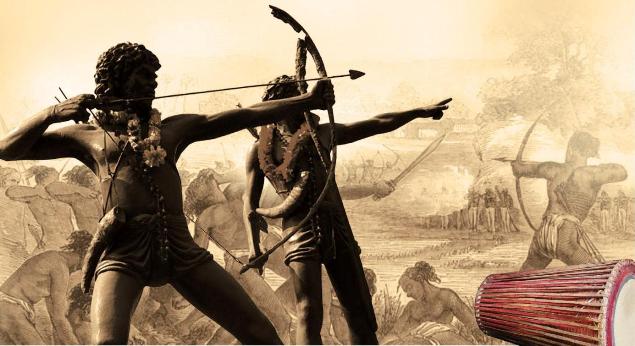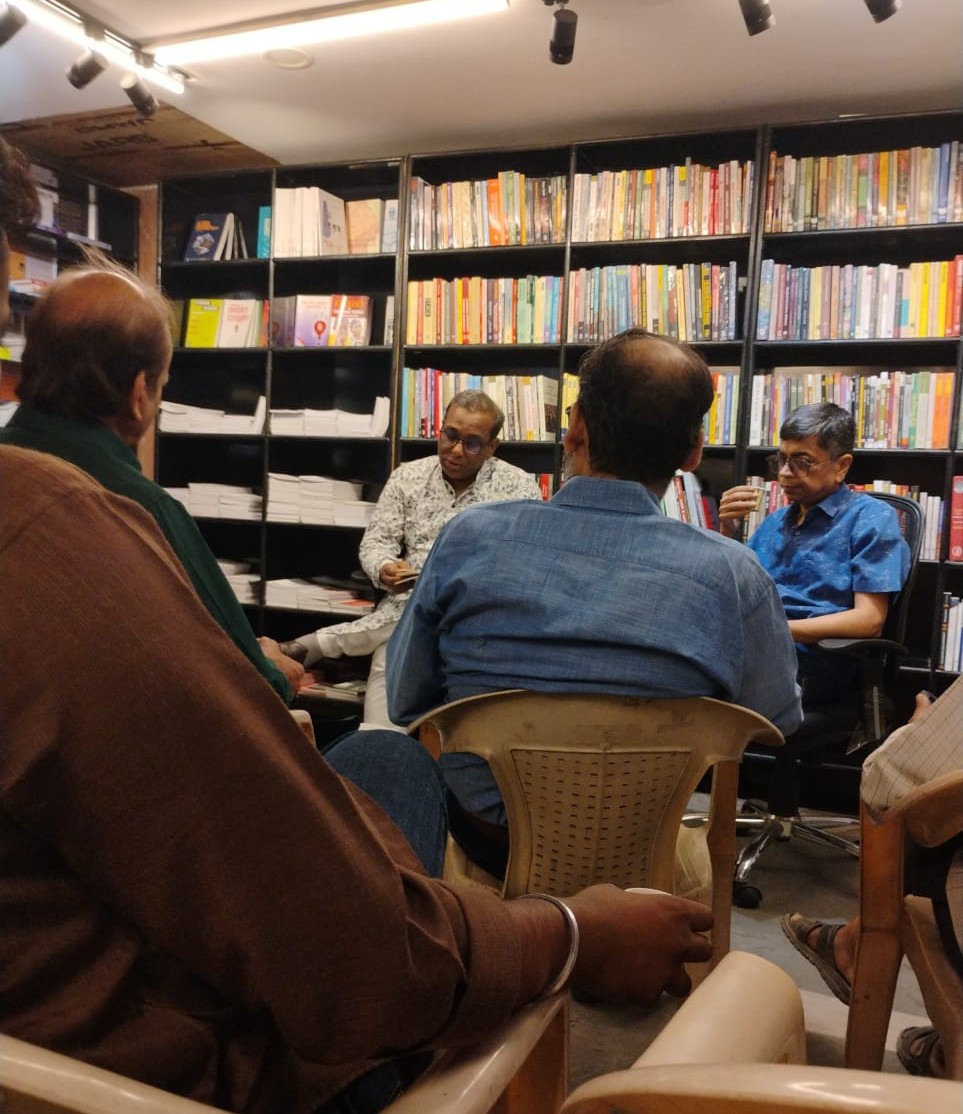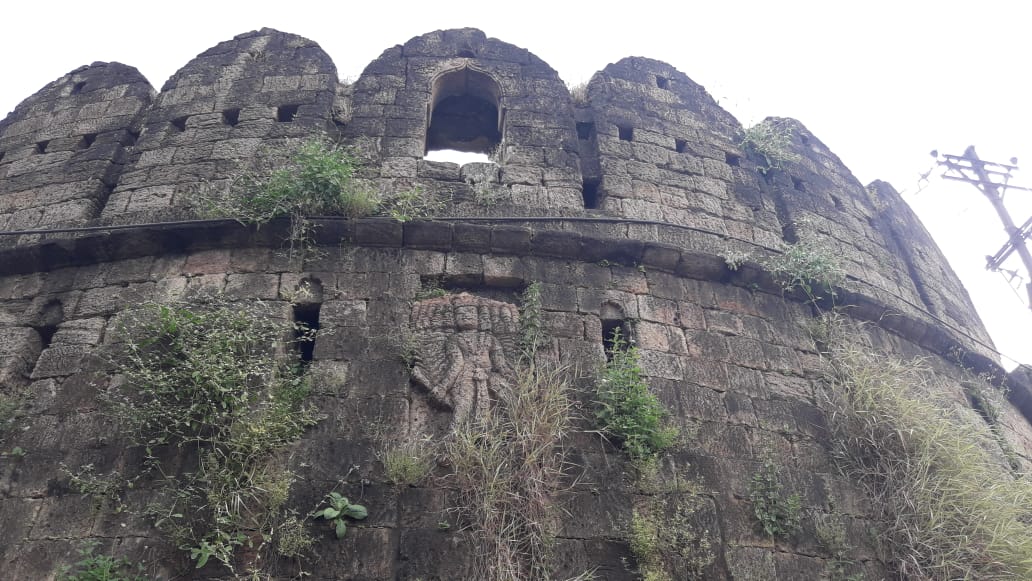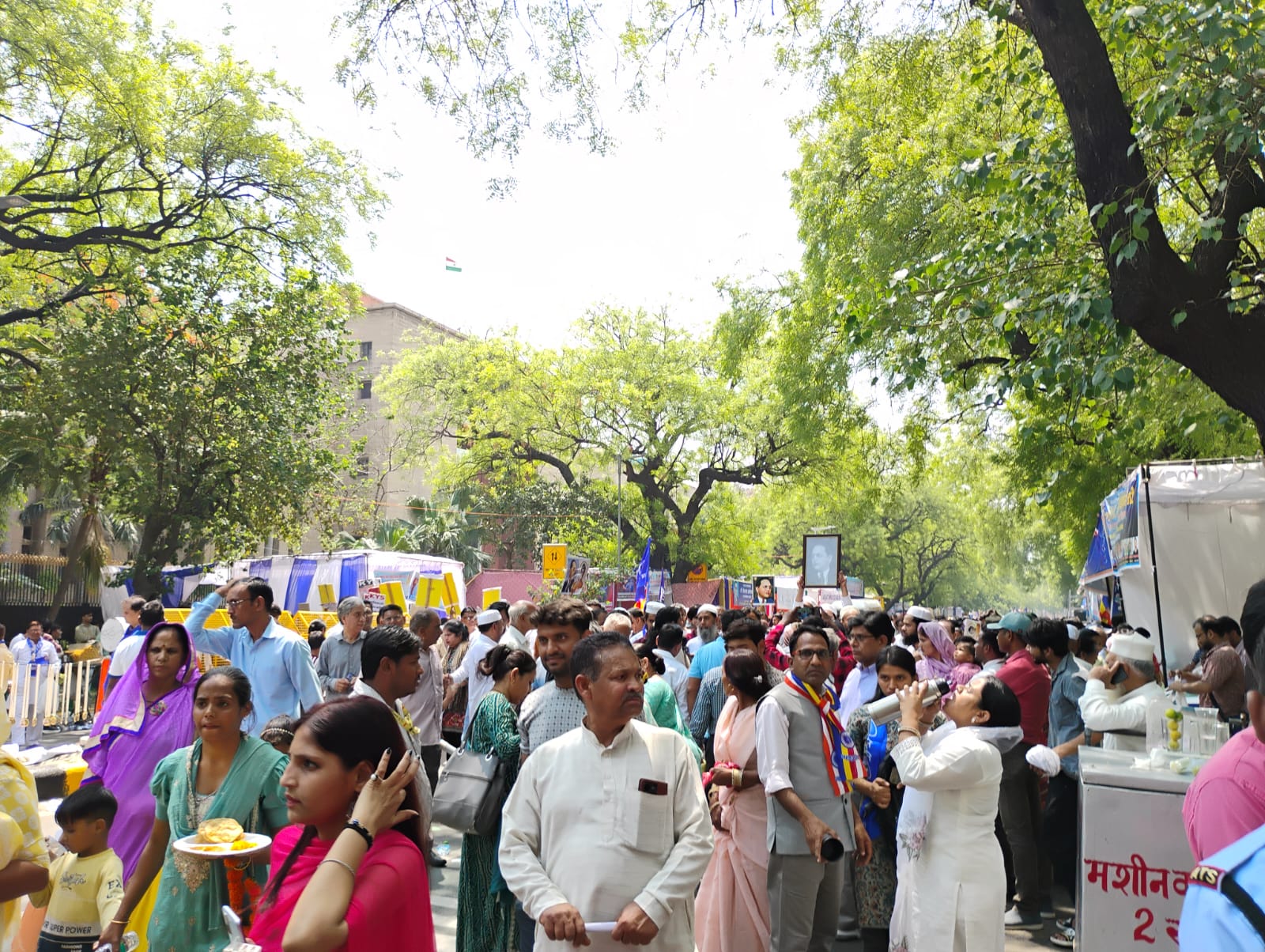In 1905, the partition of Bengal into East Bengal and West Bengal gave rise to intense political agitation in Calcutta and other towns of the Bengal Presidency. By the same fiat, Bihar and Orissa had also come into being. People in Bihar and Orissa celebrated the freedom they had won from the Bengali bhadralok hegemony that had stifled their development and hindered their spiritual and material growth.
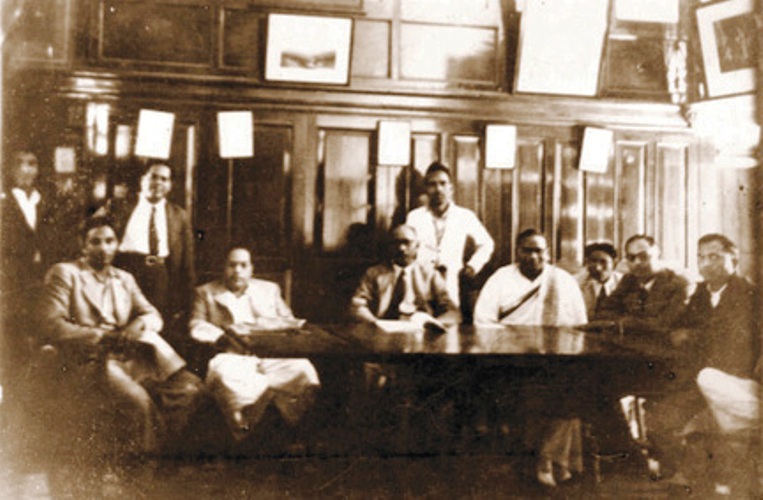
In Calcutta, widespread agitation spearheaded by prominent Bengalis greeted the administrative measures put in place by the Governor-General Lord Curzon. They accused the British rulers of breaking up the solidarity of Bengali Hindus and Muslims, who shared a common cultural identity, including a common mother tongue. But Ambedkar clinically analyzed and underlined the flip side in his treatise, Thoughts on Pakistan (1941). He observed:
The Bengali Hindu had the whole of Bengal, Bihar, Orissa, Assam and even UP for his pasture. He had captured the civil service in all these Provinces. The partition of Bengal meant a diminution in the area of his pasture. It meant that the Bengali Hindu was to be ousted from Eastern Bengal to make room for the Bengali Mussalman who has so far no place in the civil service of Bengal. The opposition to the partition of Bengal on the part of the Bengali Hindus was due principally to the desire not to allow the Bengali Mussalmans to take their places in East Bengal.[1]

As regards the commonly held notion on the Partition, the 380-page volume of Dr Ambedkar observed most succinctly that the upper-caste Hindus misguided the Hindu masses and formed the Hindu opinion. A minuscule section took a stand on behalf of the whole community. They claimed they had wide acceptance as leaders of native society. But in fact, they only took those decisions that benefited themselves – and passed them off as Hindu opinion. In 1928, the All-Bengal Namasudra Association, in its memorandum to the Indian Statutory Commission chaired by Sir John Simon, castigated the upper castes for usurping the right to take decisions as “heaven-born guardians of the masses”. The Namasudras said the upper castes were not interested in the wellbeing of the masses.
‘Aversion to share good things of life’
According to Dr Ambedkar, “Unfortunately, the upper-caste Hindus are as bad as their leaders.” They “have trait of character which often leads the Hindus to disaster. This trait is formed by their acquisitive instinct and aversion to share with others good things of life. They have a monopoly of education and wealth and with wealth and education they have captured the state. To keep the monopoly to themselves has been the ambition and goal of their life. Charged with this selfish idea of class domination, they take every move to exclude the lower classes of Hindus from wealth, education and power, the surest and the most effective being the preparation of scriptures, inculcating upon the minds of lower classes of Hindus that their duty in life was only to serve the higher classes. In keeping this monopoly in their own hands and excluding the lower classes from any share in it, the high-caste Hindus have succeeded for a long time and beyond measure.” [2]

Did Ambedkar hit the nail on the head or was he an indignant accuser of the Bengali upper castes? Listing out the castes and religions of those who held select public offices in the Government of Bengal may give us the real picture. In 1901, Bengal government had 492 deputy magistrates, of whom Brahmans were 122; Baidyas, 70; Kayasths, 144 and Muslims, 67. Out of 387 Sub-Judges and Munsifs, 136 were Brahmans, 40 Baidyas, 160 Kayasths and 20 Muslims. There were 60 police inspectors of whom 15 were Brahmans, 5 Baidyas, 24 Kayasths and 4 Muslims. Brahman education officers were 46 (out of 181); Baidyas, 13; Kayasths, 48; and Muslims, 9.[3] These are personnel of the government who deeply, if not harrowingly, influenced public life by their action, inaction and motivation. Without questioning their integrity, we may refer to the contract the Maharaja of Susang had signed with the colonial rulers in the 19th century. The contract reflected the caste preference of the zamindar. It said, “The munsif of Durgapur must be a Brahman.” Durgapur came under the jurisdiction of the Susang zamindari, which was situated in Mymensingh district of East Bengal (https://en.wikipedia.org/wiki/History_of_Mymensingh). Annada Sankar Ray, ICS, and noted Bengali litterateur had recorded this shameful protocol in his reminiscences.[4] Anybody with an inkling of the dynamics of caste knows that the first preference of any Hindu always and invariably is for his own caste men.
The corrupt ‘judge pundit’
The East India Company involved Indians in the administration of justice. Regulation XII of 1793 empowered the company to appoint Native Law Officers, both Hindu and Muslim. The former were called Pundit and latter Kazi. The Pundit in Bengal was colloquially referred to as the Judge Pundit. The regulation mandated appointment of men of “integrity and well-versed in the laws … to discharge their duty with uprightness”. They were employed for “the due administration of justice”. However, their unrestrained depravity, misconduct, cupidity and wholesale corruption brought irredeemable disgrace on the government of the East India Company, soon pushing the authorities on the back foot. None other than Pandit Iswar Chandra Vidyasagar, who launched campaigns for social reforms in 19th-century Bengal, had roundly condemned these personnel appointed for administration of justice.
In a Bengali tract, Vidyasagar says that “sometime back every district had a pundit well versed in scriptures to advise the courts for due adjudication of cases as per law. They were known as judge pundits of the courts. But these salaried men were extremely corrupt, greedy, perverse, immoral and unscrupulous. They advised the presiding judge of the courts in such manners as to serve and enhance their selfish ends only. In other words, the pundits took bribes and never followed the letter and spirit of scriptures in discharge of their duties. Though outstanding scholars in scriptures, the pundit advised the presiding judge of the court in favour of either of the parties that offered him the higher bribe to win the case. Their unfettered perversity, misconduct and immoral behaviour so deeply embarrassed the government that the regulation itself was repealed, abolishing the office of judge pundit.” The perception of immorality and depravity, corruption, perjury and perversity widely afflicting administration of justice seems to owe its origin to these native law officers. The judge pundits were mostly, if not entirely, Brahmans. There was no secular law then to enforce or administer. They interpreted shastras for guiding the courts. [5] Who benefited from the institutional mechanism the company established is quite obvious. The company, ashamed and disgraced, abolished the practice of appointing native law officers.
An upper-caste jury
The system of a jury trial that was introduced in India in the 19th century and continued till 1964 too was mindlessly abused to benefit caste and communal interests across the provinces. Recruited from upper castes exclusively, the Hindu jurors threw weight behind their own caste men. H. G. Cooke, District Magistrate, Hooghly, sent a report to the commissioner of the Burdwan Division, (Letter no. 1276 dated August 9-11, 1890) explaining who rigged the system of jury trial to their advantage and how:
There is a reluctance on the part of the native juryman to convict where there is any possibility of a capital sentence; but I believe this reluctance is not extended uniformly in all cases; and it is not connected, save in rare cases, with any decency about taking human life as such. There is not one year, in the period under consideration, in which a Hooghly jury has not convicted under section 302 IPC; but I venture to say that in none of these cases was the accused a Brahman, or even a member of that ill-defined class who are styled as ‘bhadro’ or respectable. I feel confident that the fate of a Mussalman or low class Hindu exteris paribus would not be the same at the hands of a jury as that of a ‘bhadro’; and that notably the Brahman would enjoy a certainty of acquittal … I believe the same feeling would influence the jury in a case of rape, perjury, forgery or burglary in which a ‘bhadro’ was concerned.
Only three Bengali castes, to recall social history, are “bhadro”, ie bhadralok – Brahman, Baidya and Kayasth. Bhadralok is not synonymous with respectable people or gentlemen – it denotes merely a certain number of castes in the upper echelon. Despite such blind favour showered by the jury on the three castes the census report of 1911 makes startling disclosures:
The number of Mussalman and Hindu convicts in Bengal is almost exactly proportionate to their strength in the population and it cannot be said that either community has a particular propensity to crime. The largest number of Hindu criminals are Kayasthas and Brahmans. The Kayasthas represented seven and Brahmans four criminals per 10,000 people serving jail sentences in 1911. [6]
Bengali bhadralok in Bihar and Orissa
Before Ambedkar was even born, The Englishman, Calcutta a widely circulated daily, on 27 November 1879 observed:
In Bihar, Bengalis hold nearly every office worth holding, and have the lion’s share of even the less lucrative posts … in the district of Bhagalpur, Darbhanga, Gaya, Muzaffarpur, Saran, Shahabad and Champaran twenty out of twenty-five Deputy Magistrates and Collectors were Bengalis. The personal assistants to the two Commissioners were, and are, Bengalis. In Patna, six of the seven Munsifs or native civil Judges are Bengalis. Three of the four Munsifs of Saran are Bengalis. More than half the Sub-Deputies are Bengalis … nine in ten of the Magistracy, Collectorate and Judicial head clerks are Bengalis, not only in district stations, but in the sub-divisions. Bengalis crowd the treasuries, and manage the Municipalities. Bengali Assistant Surgeons and Native Doctors are in charge of more than nine out of ten dispensaries and lockups. There are 8 Bengali Gazetted medical officers in Patna alone. The few native engineers are all Bengalis. The Road cess accountants, overseers, and clerks are three fourth Bengalis. The supervising staff of the postal department and the post masters of most of the best stations are Bengalis … Even where a Bihari does secure employment, it is usually in a position that Bengalis refuse to accept. If it happens that a well educated native of Bihar is beginning to win his way upwards, it is alleged that he finds his every act scrutinized by the Bengali head clerks, Deputy Collectors and personal assistants: and that every step, or trip, is mercilessly brought to the notice of the English officers.”
The Englishman had the integrity to self-indict publicly stating that “they (Bengalis) are almost as foreigner and intruders as ourselves”. This quality of speaking and exposing the truth so candidly is the rarest among Indians.
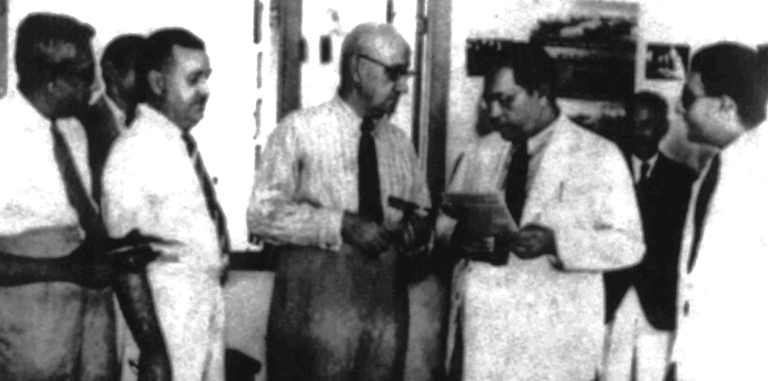
A Bengali newspaper disclosed on 3 March 1838 that the Bengal Government in Cuttack district of Orissa had posted 24 deputy magistrates . [7] Eighteen of them were already deployed there. Most of them were educated in Calcutta and were Bengalis.
A towering Bengali intellectual, Nirad C. Chaudhuri, admitted that his first employment in the Defence Accounts Department in Calcutta was facilitated by nepotism. The ground rule of nepotism was very plain. According to Nirad Babu, “a Chatterjee takes in a Banerjee and a Mitra a Bose.” [8] He has not left anybody in doubt as to who laid down the ground rules of recruitment in Bengal, Bihar, Orissa and Assam. We are given to understand that the Brahman and Kayastha partook of the whole cake, ie public offices. No one else could hope for access to government offices in this presidency in the colonial era.
One may wonder why Nirad Babu was reticent about the Baidya, the other member of the bhadralok triumvirate. Were they any different from the Brahman and Kayasth? One highly accomplished scholar, Jogendranath Bhattacharya, shines rare light on them. The president of the College of Pandits of Nadia wrote:
“The Baidyas are very clannish, and, wherever a Baidya manages to get into a high office, he is sure to introduce as many of his caste men as he can into the department. Babu Ram Kamal Sen, who, as mentioned already, was the Dewan of the Bank of Bengal, introduced at one time a very large number of his clansmen there. The East Indian Railway office at Jamalpore is perhaps still similarly full of Baidyas, introduced through the influence of its late head clerk, Babu Madhu Sudan Roy, the father of Babu Amrita Lai Roy, of the Hope.” [9]

The Jamalpur Locomotive Workshop was established on 8 February 1862. It was the first fully fledged railway workshop facility set up by the East Indian Railway in India. The place was adjacent to Monghyr (now Munger), which was at the time considered the ‘Birmingham of the East’. Jamalpur virtually turned into a Baidyabati, as Writers Buildings in Calcutta was once pejoratively referred to. As Nirad C. Chaudhuri related, those employed in the workshop shared the vision and mission of the likes of Babu Ram Kamal Sen. Local people, denied of opportunity, deeply resented this behaviour of the Baidyas. Bengalis thus became a target of hatred in the neighbouring provinces. They symbolized craftiness, deception and sophistry. This legacy of the 19th century persists even today.
On 21 January 1929, in Calcutta, the Simon Commission recorded the oral evidence of a joint delegation comprising representatives of All-Bengal Depressed Classes Association and All-Bengal Namasudras Association. The Commission was told that for appointment of clerks in Dacca Civil Court, a matriculate son of an official and undergraduate brother-in-law of the head clerk were preferred to graduates who belonged to the “depressed classes”. During recruitment of sub-registrars for the Dacca Division, a candidate from the Depressed Classes with an MA was rejected to favour a BA, who was a Kayasth. The aforesaid delegation highlighted many more instances of nepotism and favouritism in recruitments to the offices of the Controller of Currency, Bengal and Accountant General of Bengal. [10]
A position in the public services implied, among other things, entry into the power structure. The upper castes couldn’t accept the Untouchables stepping into the corridors of power. The olden days were not as golden as painted by the historians:
It is a matter of constant complaint in Government as well as in mercantile offices where the influence of the Hindu employees happen to dominate [that] it is almost impossible for the Bengali Muslims to secure any employment. It is very well on the part of our Hindu brethren to say in public that there should be no distinction of caste or creed in making appointments in public service, but when the time for actual appointment comes and when the Hindus have any hand in the matter, a rigid distinction is secretly observed and the Muslims are practically ousted. There are departments where ministerial offices are closed against the Muslims. In mercantile offices where the bara babu is a Hindu, almost all posts are the monopoly of that community. [11]
The “acquisitive instinct and aversion to share with others good things of life” that Ambedkar talked about made the upper-caste Hindus – although a minority – raise walls against numerically vast superior multitudes. Their intolerance and arrogance has been tom-tommed as cultural excellence and a unique accomplishment.
Dr Ambedkar pointed out in 1941 that Muslims in Bengal numbered 27.49 million and the Hindus, 21.57 million. In other words, Bengal had 12 per cent more Muslims than Hindus. He found the situation in Punjab similar and therefore, passed his ultimate verdict: “It seems to me that the moment has come when high-caste Hindus of Bengal and Punjab should be told that if they propose to resist Pakistan because it cuts off a field of their gainful employment, they are committing the greatest blunder …” He also added, “The determination to live under a Muslim majority and to hope to gain more than your share may be a courageous thing. But certainly this is not a wise thing. Because, chances are that you will lose all.” The Hindu leaders found the Partition more convenient and beneficial. So millions of men, women, children, the old and the sick were forced to leave their homes and hearths and begin life anew in unknown, inhospitable and hostile environments. Even decades on, many on either side of the border find the identity of a refugee etched on themselves. Surprisingly, in 1947, the percentage of the Untouchables was the largest in the Punjab and in East Bengal.
Demographic dividends favoured Muslim homeland
No community submits to indignity, humiliation and deprivation silently for eternity. Deprivation generates grievances that in turn give rise to anger. Anger leads to protests and violence, if grievances are not redressed by judicious action and impartial intervention. Census of India 1901 recorded the sociopolitical costs of caste prejudice and hatred: “The Namasudra aggregate about 18,861,000 and the Pods nearly half a million; but the full strength of the two castes is concealed by the fact that large numbers have been converted to Muhammadanism … There are ten and a half millions of Muhammadans in the Dacca and Chittagong Divisions and … It would probably be safe to say that at least nine millions of the Muhammadans of Bengal Proper belong to this stock.” [12] As Untouchables, Namasudra and Pod were “social lepers” who had no reprieve from the relentless Hindu persecution, forcing them to embrace Islam.
The credit for creating East Pakistan thus goes to the persecuting Hindu caste-lords, although they are perhaps ashamed to acknowledge it. Putting the blame on Viceroy Lord Mountbatten, the British divide-and-rule policy and Mohammad Ali Jinnah for the creation of Pakistan is an upper-caste Hindu ploy to cover up their shame. Untouchability, oppression and discrimination against Namasudras and Pods lent Muslims majority at least in Bengal and the denial of opportunities to them sowed in them the desire for their own nation.
[1] Ambedkar, B. R., Thoughts on Pakistan, Thacker and Company Limited, Bombay, 1941, p 118.
[2] Ibid, pp 117-118.
[3] Census of India, 1901, Vol VI, Part I, p 506.
[4] Ray, Annada Sankar, An Old Story in The Statesman, Festival, 1991, Calcutta, p 51.
[5] Biswas, A. K., The ‘Uncle Judge Syndrome’ shadow over Laxmanpur Bathe, Mainstream, Vol. LI, No 49, 23 November 2013.
[6] Biswas, A. K., Ibid.
[7] Bandopadhyay, Brajendra Nath, Sambadpatre Sekaler Katha, Bangiya Sahitya Parishad, Calcutta, 1948, p 386.
[8] Biswas, op cit.
[9] Bhattacharya, Jogendra Nath, Hindu Caste and Sects, 1896, Thacker Spink & Co, Calcutta.
[10] Biswas, A. K., The Namasudras of Bengal: Profile of a Persecuted People, Blumoon Books, Delhi, 2000, pp 84-85.
[11] Rahman, Mujibur, ‘Indian Unity, As Evidenced by Hindu-Mussalman Relations in Bengal’, The Hindustan Review, Vol XVIII, July-December 1908, pp 423-324.
[12] Census of India 1901, Vol VI, p 396.
Forward Press also publishes books on Bahujan issues. Forward Press Books sheds light on the widespread problems as well as the finer aspects of Bahujan (Dalit, OBC, Adivasi, Nomadic, Pasmanda) society, literature, culture and politics. Next on the publication schedule is a book on Dr Ambedkar’s multifaceted personality. To book a copy in advance, contact The Marginalised Prakashan, IGNOU Road, Delhi. Mobile: +919968527911.
For more information on Forward Press Books, write to us: info@forwardmagazine.in


